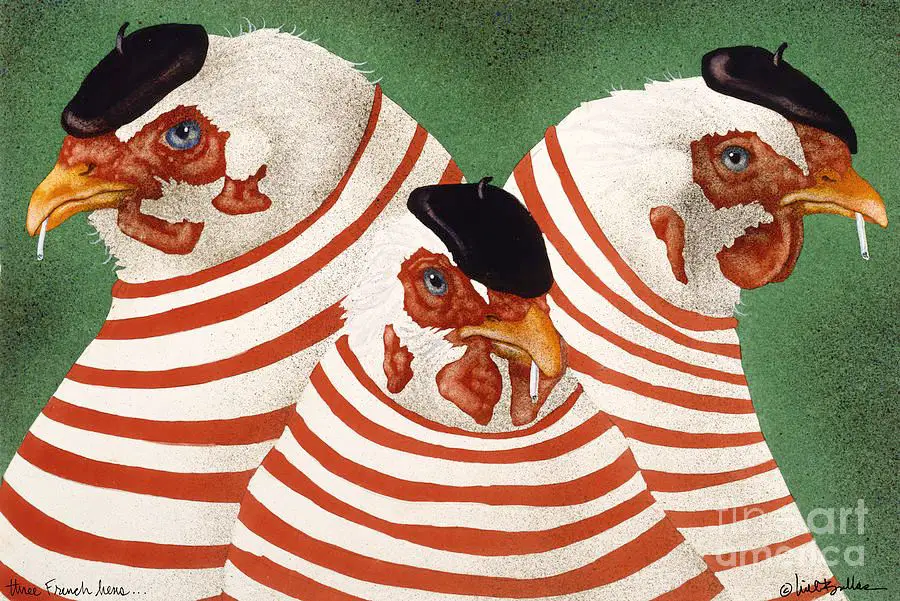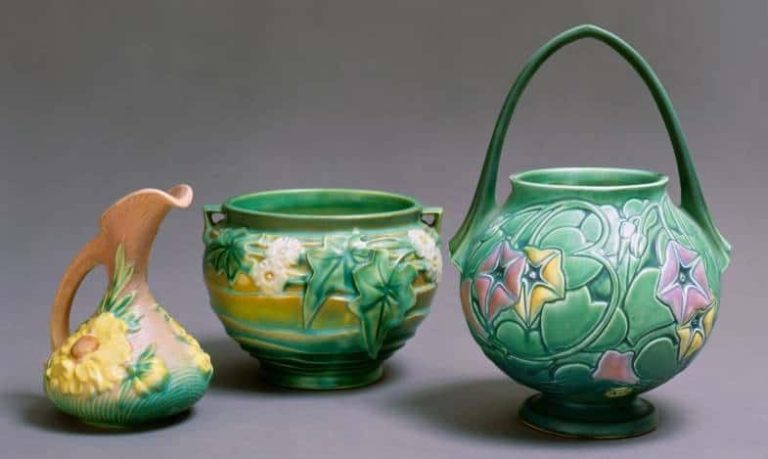What Are The 3 French Hens?
What are the 3 French hens?
The 3 French hens refer to one of the gifts given in the popular Christmas song “The 12 Days of Christmas.” This song lists out all 12 gifts given over the 12 days leading up to Christmas day. The verse for the 3 French hens goes:
“On the third day of Christmas my true love gave to me, three French hens…”
So on the third day, the gift given was 3 French hens. The 12 Days of Christmas song is thought to have originated as a catechism or memory aid to help young Christians learn articles of faith during a time when practicing Christianity was illegal in England from 1558-1829. The 3 French hens specifically are said to represent the three theological virtues of faith, hope, and charity from 1 Corinthians 13 [1].

Origins and History
The origins of the popular Christmas carol “The Twelve Days of Christmas” can be traced back to 18th century England. According to historians, the song most likely began as a children’s memory game used to teach catechism (The Twelve Days of Christmas (song)). The song helped young Catholics in England remember and recite different articles of faith during a time when Catholicism was suppressed in the country.
The format of gradually adding an increasing number of items was a common one used in memory games and songs at the time. As early as 1780, a children’s book called Mirth Without Mischief contained a similar cumulative song (The 12 Days of Christmas, explained). This provides evidence that the Twelve Days of Christmas may have also been used as a forfeits game, where players would have to remember each item correctly or pay a penalty.
The earliest published version of the lyrics appeared in the 1780s, although the song most likely existed in oral tradition before then. Over time, it evolved into a Christmas carol associated specifically with the 12 days of Christmas, from December 25 to January 5. While the exact roots are unknown, the majority of historians agree “The Twelve Days of Christmas” originated as a children’s catechism memory game in 18th century England.
Literal meaning
The 3 French hens represent 3 calling birds from France, which were considered a luxury gift during the period when the song originated in the 18th century (Americanornithology.org). At the time, hens from France were prized for their rich coloring and designs, as well as for their lovely song. French hens were seen as more exotic and valuable than common barnyard chickens.
The song “The 12 Days of Christmas” is thought to have originated as a memory game, where each gift represents a characteristic of Christianity or other symbolic meaning (Vox.com). The 3 French hens specifically represent the three gifts of gold, frankincense and myrrh that the three wise men brought to the baby Jesus.
So in the context of the song, receiving three French hens as a gift signified wealth, extravagance and the birth of Christ (Bonjourdarlene.com). They were a treasure to be eagerly anticipated on the third day of Christmas.
Symbolic meaning
The three French hens in the song are traditionally interpreted as representing the Christian virtues of faith, hope, and charity. This symbolic meaning dates back centuries, with the partridge originally representing Jesus Christ and the three hens representing the Trinity or the three theological virtues.
According to the TLHA, “On the third day of Christmas my true love gave to me . . . three French hens. These birds represent faith, hope, and love.” (1)
The Newman Center explains: “The three French hens stand for the three Theological Virtues: Faith, Hope and Charity.” (2)
So in the context of the 12 Days of Christmas song, the three French hens can be seen as symbolizing core Christian values.
Use in popular culture
The “three French hens” from the Christmas carol “The Twelve Days of Christmas” have been referenced many times in popular culture:
In television, the hens were referenced in episodes of shows like Gilmore Girls, The Big Bang Theory, and Full House. For example, in a 1991 episode of Full House called “Our Very First Christmas Show”, one character sings “three French hens” when the family is singing the full “Twelve Days of Christmas” song together.
In movies, the hens appear in films like Fred Claus and Deck the Halls. In Fred Claus, a character gifts someone three French hens, and there is debate over what to actually do with live hens.
The hens are also referenced in books like The Twelve Days of Christmas by Greg Pizzoli, which is a children’s book that brings the song to life. They also appear in the comedy mystery novel Three French Hens by Lynda La Plante.
Overall, the “three French hens” have become a well-known part of pop culture, regularly used in jokes, stories, songs, and other media as a reference to the popular Christmas carol.
Cost analysis
The traditional song “The Twelve Days of Christmas” lists “three French hens” as one of the gifts given on the third day. At the time the song was originally composed in the 18th century, French hens likely did not cost very much.
According to the PNC Christmas Price Index [1], the current cost for three French hens is $330. This factors in costs for labor, feed, and raising the birds. While specific historical prices are difficult to find, it’s safe to say the cost of three hens today is significantly more than it would have been in the 1700s or 1800s when the song was first popularized.
The French hens remain one of the most affordable gifts in the “Twelve Days of Christmas” song. But the costs have risen over time along with other goods. So while three French hens may have been a modest gift when the song was written, their price tag today would be much higher by comparison.
Where to find French hens today
French hens originated in France but are now raised all over the world. Here are some modern sources for purchasing these unique chickens:
Cackle Hatchery is a leading online source for purchasing day-old French hen chicks in the United States. They offer several popular breeds of French hens, including French Wheaten Marans, French Black Copper Marans, and more.
The Chick Hatchery is another good online source for French hen breeds in the U.S., including Black, Black Copper, Cuckoo, and Wheaten Marans varieties. They ship most of the United States.
Local farm stores or feed stores may also carry French hen chicks during springtime. Check with stores in your area to see if they can special order French hen breeds.
Backyard chicken keepers sometimes have French hen breeds available through local classified ads or community groups/forums. Connecting with local chicken enthusiasts is a great way to find rare breeds.
French hens can also be imported from reputable international hatcheries in France and the EU. However, importing live chicks overseas can be complex.
French Hen Breeds
France has contributed many popular chicken breeds to the poultry world. Some of the most well-known French hen breeds include:
The Bresse Gauloise is a dual purpose breed known for its fine meat quality and egg laying ability. These chickens have white feathers and red combs and wattles. They are calm, hardy birds that adapt well to confinement or free range environments (Source).
The Marans breed originated in the historic port town of Marans, France. They are valued for their very dark brown eggs. Marans hens have a black and copper feather pattern and lay about 200 eggs per year. They have a reputation as good foragers (Source).
Originating near Rennes, France, the Coucou de Rennes is a very rare breed today. These small chickens are good layers of small white eggs even in poor conditions. The hens have a unique black and white barred plumage pattern (Source).
The Faverolles comes from the village of Faverolles in north-central France. Their most distinctive feature is the muffs of feathers under the beak area. Faverolles are well-adapted to cold weather and lay light brown eggs consistently. The hens have a salmon-colored plumage (Source).
French hen care
Properly caring for French hens requires providing them with the right diet, housing, and health management. Here is an overview of some key aspects of French hen care:
Feeding: French hens need a balanced diet rich in protein, carbohydrates, vitamins, and minerals. A typical diet consists of layer feed or pellets supplemented with greens, vegetables, fruits, and insects. Provide clean, fresh water at all times. Ad libitum feeding allows hens to eat as much as they need.
Housing: French hens need an enclosed, predator-proof coop with perches for roosting and nest boxes for egg laying. The coop should have ample ventilation and be thoroughly cleaned between flocks. Access to an outdoor run allows hens to forage and get fresh air and sunshine. About 10 square feet per bird is recommended.
Health: Monitor French hens for parasites, illnesses, and injuries. Provide vaccinations and prompt veterinary care as needed. Regular grooming and occasional beak trimming helps keep hens healthy. Allow 4-6 weeks of rest between laying cycles.
With proper diet, housing, health management, and general care, French hens can live productive, healthy lives and provide farm-fresh eggs.
Using French Hens
French hens like the Faverolles and Houdan are dual-purpose heritage breeds valued both for their egg laying abilities and meat production. The eggs of French hen breeds tend to be medium to large in size and light brown in color. Their meat is flavorful and they are slower growing, taking around 16-20 weeks to reach harvest weight compared to commercial broiler chickens that are ready in 6-8 weeks. Some benefits of raising French hens include:
- Excellent layers of 200+ eggs per year
- Their unique looks make them popular exhibition and pet chickens
- Docile temperaments good for families with children
- Their heritage genetics mean they are hardy and good foragers
- Their longer growth period results in more flavorful meat
- They are an heirloom breed that helps preserve genetic diversity
Overall, French hens are a dual purpose bird that can provide both eggs and meat while also serving as charming pets and exhibition poultry. Their productivity, personality, and heritage genetics make them a popular choice for small farms and backyard flocks.




